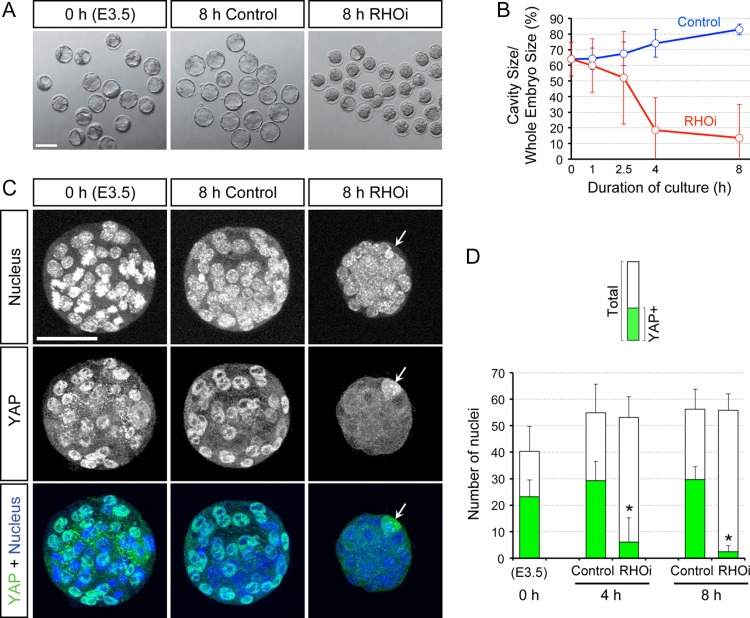Figure 2.
Requirement of RHOA activity to maintain the cavity and nuclearized YAP in the E3.5 expanding mouse blastocysts. (A) Bright-field images of blastocysts before treatment (0 h) and those that have been treated for 8 h (8 h) with no inhibitor (Control) and with ras homolog family member (RHO) inhibitor I (RHOi). (B) Time course of the cavity size, expressed as the percentage of the blastocyst size, during the course of 8 h treatment with no inhibitor (Control; n = 18) or with RHOi (n = 28). (C) Z-projection confocal images of nucleus and YAP in representative blastocysts before and after treatment with no inhibitor or with RHOi. Arrow is pointing to the polar body, which contains a condensed nucleus and high YAP signal. (D) Number of total nuclei and YAP-positive nuclei in blastocysts before treatment (0 h; n = 10), and after treatment for 4 h (control: n = 7, RHOi: n = 12) and 8 h (control: n = 6, RHOi: n = 16). Asterisks indicate significant differences (P < 0.01; two-sample t-test) in the number of YAP-positive nuclei between control and RHOi-treated blastocysts. Scale bars in (A) and (C) are 100 μm and 50 μm, respectively. Error bars in (B) and (D) represent SD.

